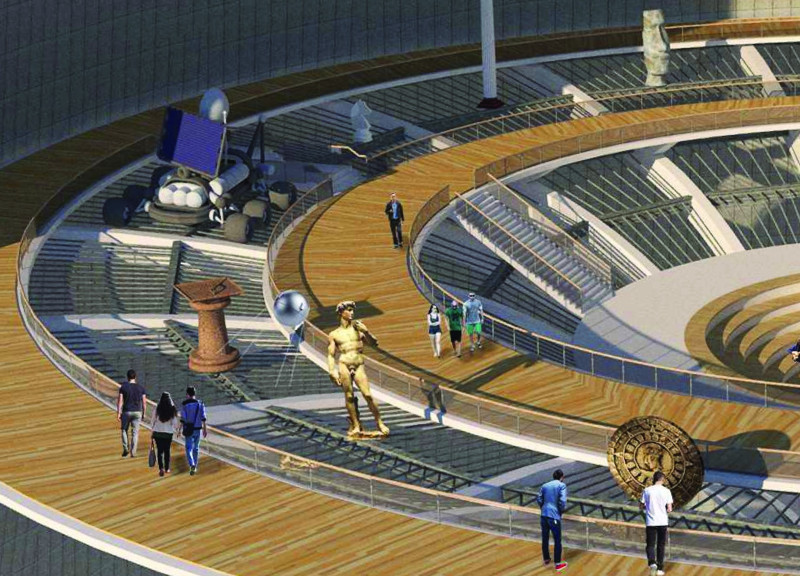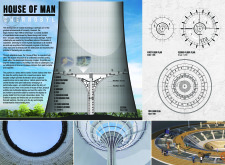5 key facts about this project
The House of Man is a pavilion located within the Chernobyl complex, specifically in an unfinished concrete cooling tower. It serves as a space for reflection and education, addressing the historical narratives of nuclear technology and its effects on people and the environment. The design centers around the idea of adaptive reuse, turning a structure once associated with industrial growth and disaster into a site for contemplation and learning.
Spatial Design
The concept includes a "tower within a tower," which creates a complex arrangement of spaces that invite exploration. Visitors enter at the base and are met with a large, open area filled with filtered sunlight pouring through the concrete structure. This combination of light and shadow enhances the atmosphere, prompting visitors to think about the significance of the location.
Movement and Visitor Experience
As visitors travel upward through the pavilion, they use central elevators and spiral staircases to reach a performative area, designed as an amphitheater that narrates the story of humanity. This layout encourages engagement, allowing for interaction with both physical exhibits and digital displays. The exhibition spaces are flexible and can be arranged into different themes, offering varied approaches to storytelling.
Interior Environment
The design prioritizes observation and reflection, with circular observation decks available for visitors to gain different viewpoints on displayed content. These elevated areas foster connection with the exhibits, allowing for deeper understanding and interaction. This focus on engagement emphasizes the complex relationship between people and technology, all within the context of Chernobyl's history.
Natural Elements
The integration of natural light into the design plays an important role in the visitor experience. Sunlight enters the space and highlights its features, forming a link between what is outside and the interior. The House of Man thus serves as a venue for thought, reinforcing the value of remembering the past as a guide for the future.
The design culminates in an upper structure that appears to float above, creating a sense of elevation and inviting visitors to explore the multi-layered space below. This downward viewpoint encourages a more in-depth experience as guests reflect on the meanings embedded within the pavilion.


















































